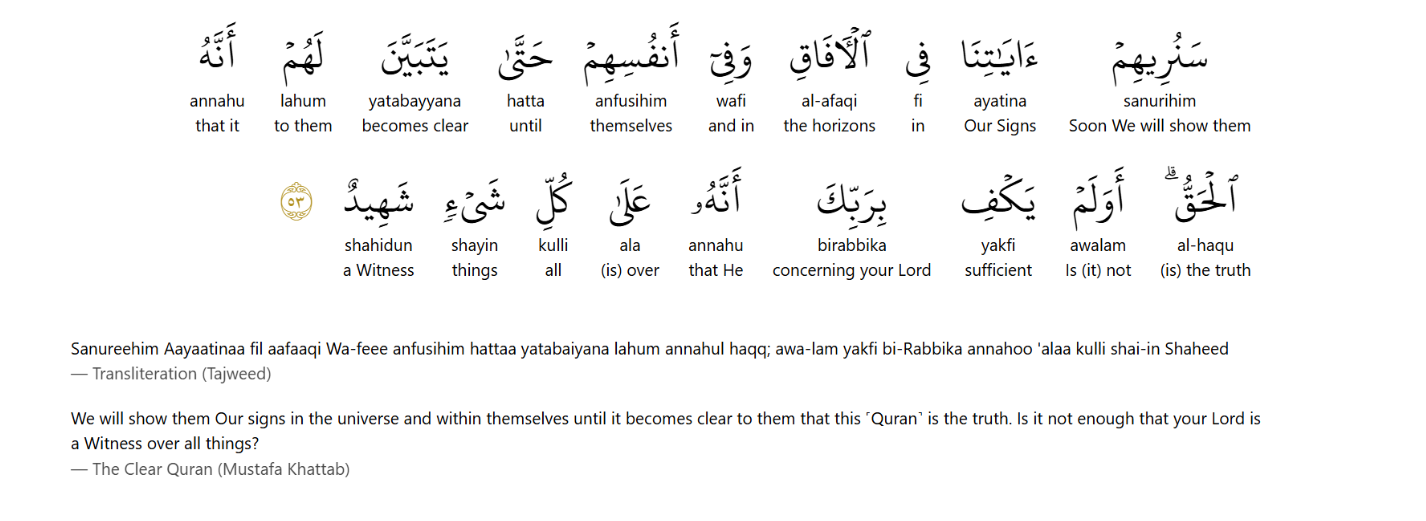SURAH MU’MINUN (THE BELIEVERS):AYAT 14 (QURAN 23:14)
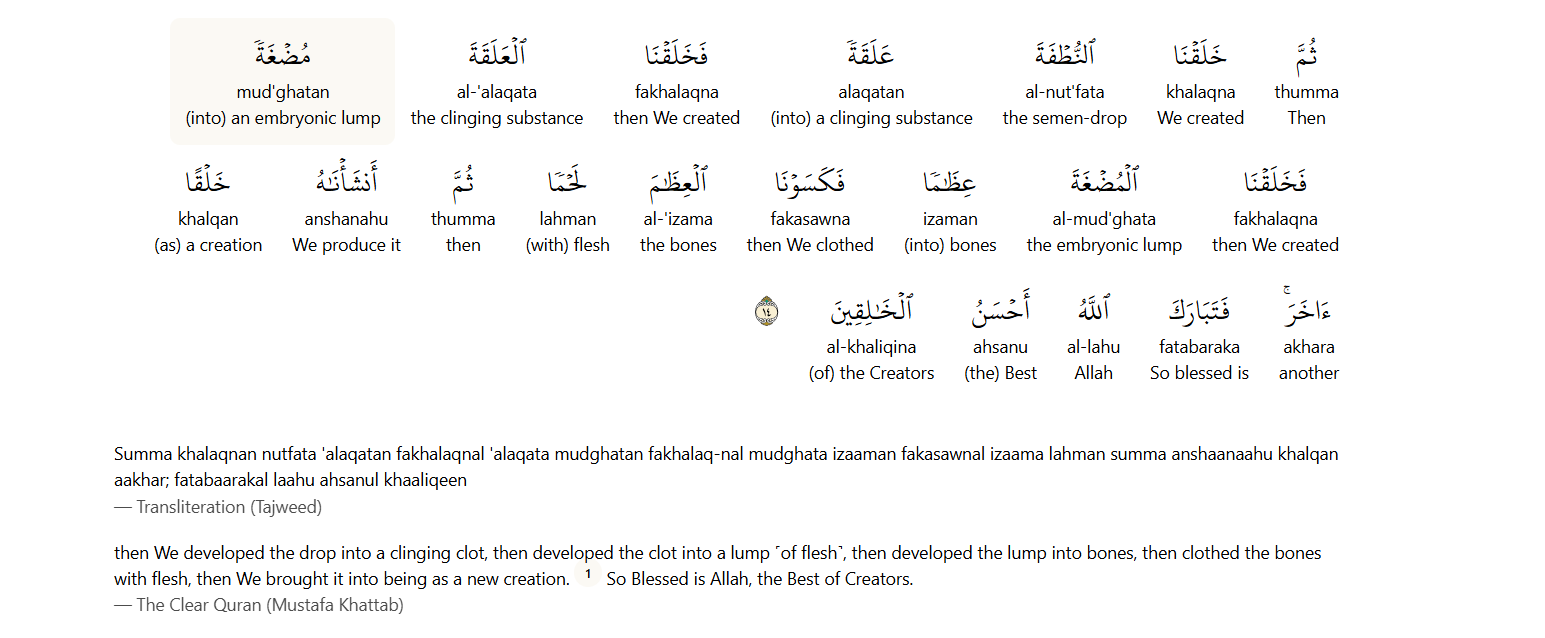
Embryonic development is a mesmerizing journey, a symphony of cellular choreography that unfolds from a single fertilized egg into a complex, living organism. Across the vast tapestry of life, this process reveals striking parallels—even in creatures as seemingly distinct as humans and leeches.
Leeches, those enigmatic annelids, offer a fascinating glimpse into embryonic development. Their segmented bodies arise from meticulously orchestrated cell divisions, much like the early stages of vertebrate development. The formation of germ layers, the role of stem cells, and the intricate dance of differentiation all echo patterns seen in more complex organisms. In particular, the way leech embryos establish their body plan through teloblast-driven segmentation bears a resemblance to the foundational processes that shape vertebrate embryos.
In Surah Muminoon, Ayat 14 ( Quran 23:14) – the Quran describes the early stages of human embryonic development using the Arabic word “alaqah”, which has three meanings: leech (the most common classic meaning), suspended thing, and blood clot. This comparison is fascinating because, during the alaqah stage, the embryo bears a striking resemblance to a leech in both shape and function—it clings to the uterine wall and draws nourishment from the mother’s blood, much like a leech does.
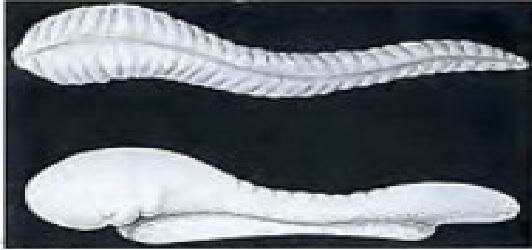
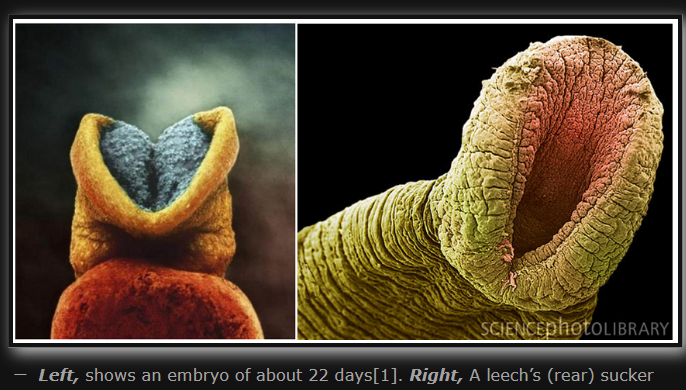
Additionally, the embryo at this stage appears as a suspended entity within the womb, aligning with the second meaning of “alaqah”. The third meaning, blood clot, is also fitting, as the embryo contains a significant amount of blood that does not circulate until later in development.
At a specific stage of development, around 22-25 days post-fertilization, a human embryo and a leech share a remarkable resemblance in their external and internal structures, particularly in their tubular shape and the presence of a central nervous system. At approximately 23 days post-fertilization, the human embryo’s body takes on a tubular shape, resembling a leech. This tubular structure is a result of the development of the neural tube, which will eventually form the brain and spinal cord. The leech, with its segmented body and elongated shape, also exhibits a similar tubular structure highlighting an external similarity of both organisms.
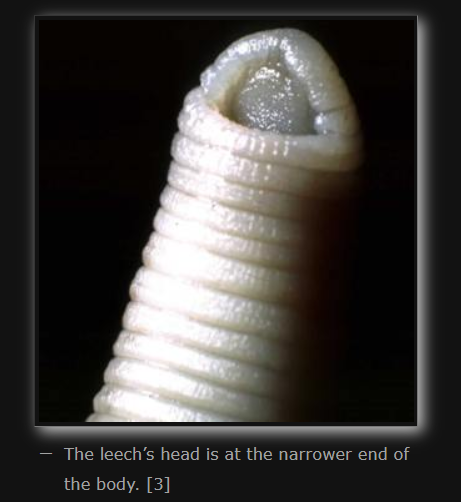
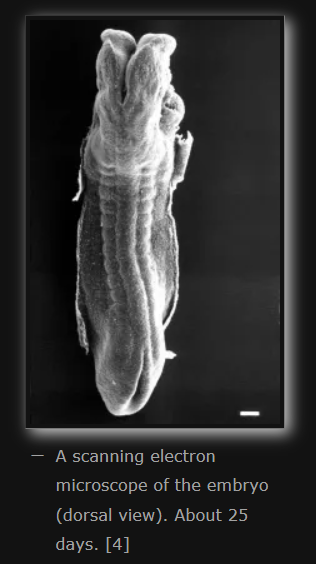
The internal structure of the embryo at this stage also shows similarities to the leech. Both have a central nervous system, although the human nervous system will develop into a more complex brain and spinal cord. The embryo’s blood vessels and other internal structures also contribute to the overall resemblance.
The embryo will continue to develop and differentiate, eventually forming a fully formed human body. The leech, on the other hand, remains a relatively simple organism with a distinct life cycle. This unexpected kinship between leeches and higher organisms underscores a source code in the biological world. It is a testament to The Creator’s ingenuity—where even the humblest of creatures share developmental blueprints with the grandest of life forms. Also it is a testament to The Creator’s words when the Quranic description, revealed over 1,400 years ago, aligns remarkably well with modern embryology, which was only fully understood in recent times by modern high powered microscopes.
In Surah Fussilat (Quran 41:53) – Allah (swt) says: We will show them Our signs in the universe and within themselves until it becomes clear to them that this ˹Quran˺ is the truth. Is it not enough that your Lord is a Witness over all things?
